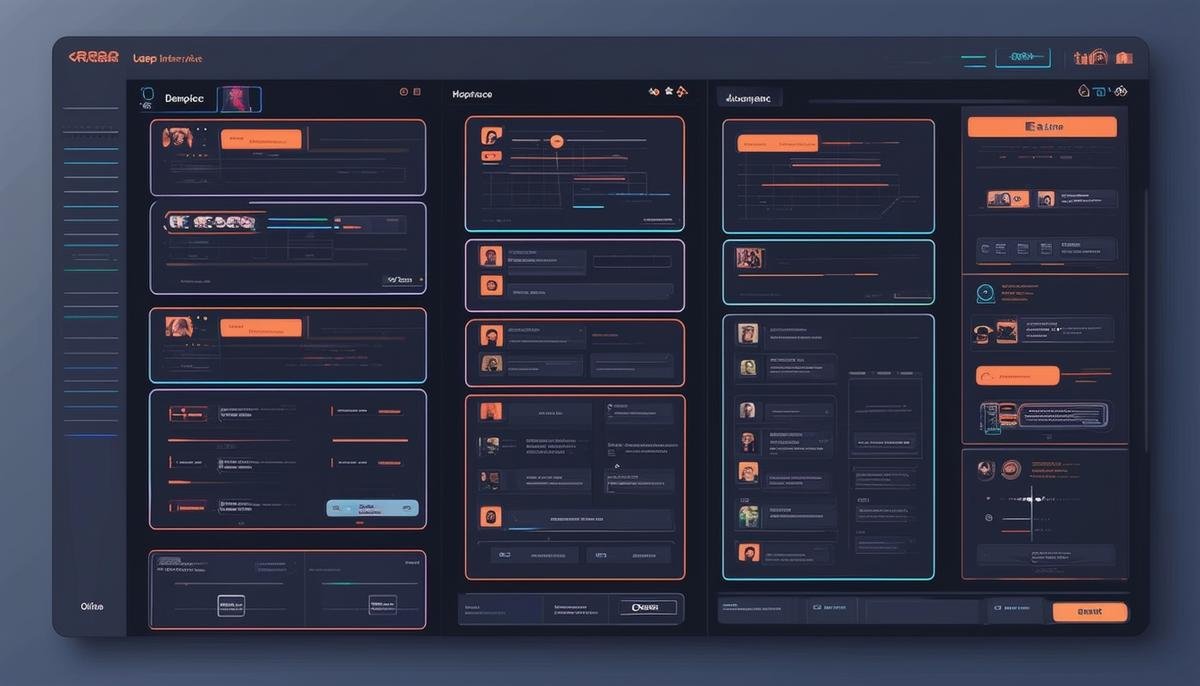Artificial General Intelligence (AGI) aims to replicate the comprehensive capabilities of human intelligence. Unlike Narrow AI, which excels in specific tasks, AGI aspires to master a wide range of functions, from reasoning and problem-solving to perception and language comprehension. This versatility makes AGI a potentially powerful tool, capable of transforming various sectors by executing complex tasks with human-like adaptability and flexibility.
Understanding AGI and Its Potential
AGI represents a significant advancement in AI capabilities, aiming to emulate the breadth and depth of human intelligence. Unlike Narrow AI, which excels in specific tasks, AGI seeks to master an array of functions that a person can perform. This includes reasoning, problem-solving, perception, learning, language comprehension, and more.
AGI's scope of tasks is vast. It could potentially:
- Write legal briefs
- Diagnose medical conditions from imaging
- Generate creative content like music or art
This versatility makes AGI a powerful tool in ways that current AI systems can't match.
Learning and adaptation are key features of AGI. Unlike Narrow AI, which is tuned for specific data sets and requires retraining for new tasks, AGI aims to learn from experiences across various domains and transfer learning from one task to another.
Flexibility is another important aspect of AGI. It could potentially function across different contexts and environments, from healthcare to financial services to education, bringing a level of adaptability that exceeds current AI capabilities.
AGI's theoretical capabilities also extend to abstract thinking and understanding nuances in human behavior and language. For example, it could interpret the emotional tone of a conversation or make ethical decisions in complex scenarios.
To handle various types of learning and algorithms is another presumed capability of AGI. It doesn't rely on one fixed structure but adapts different algorithms for different tasks, creating a flexible framework stronger than any single-purpose AI system.

Technological Challenges and Ethical Considerations
Achieving AGI presents significant technological and ethical challenges that require careful consideration.
Technological hurdles include advances in core AI components such as:
- Machine learning
- Natural language processing
- Computational power
Machine learning algorithms must become more sophisticated, capable of generalizing knowledge to new, unseen scenarios. Natural language processing must evolve to interpret and generate language with a nuanced understanding close to human proficiency. Computational power must also improve dramatically to process the breadth of tasks akin to human intelligence.
Ethical considerations are equally critical:
- Bias is a major concern, as AI systems are trained on data sets that often reflect societal biases.
- Privacy is another issue, as AGI systems would handle vast amounts of sensitive data.
- Accountability poses challenges in determining responsibility for AGI actions.
- The societal impact of AGI, including potential job displacement, also demands attention.
These challenges require collaboration across fields—from computer science to ethics—to ensure that AGI develops as a beneficial technology that enhances human capabilities and contributes positively to society.

Enhancing Human-Machine Interaction
AGI promises to transform human-machine interaction into something more intuitive, adaptive, and personalized. It could potentially understand and respond to user needs with greater depth and precision than current AI systems.
In personal applications, AGI could offer more sophisticated virtual assistance, analyzing past preferences and current context to provide personalized recommendations. In professional settings, AGI systems could transform workflows by providing deeply personalized tools that adapt in real-time.
AGI could also create user interfaces that mold themselves around user preferences and behavior, accommodating different interaction methods. This level of customization could ensure a more seamless and natural interaction with technology.
In problem-solving, AGI's ability to contextualize and adapt could allow for more dynamic problem resolution. For example, in customer service, an AGI-powered system could potentially handle complex inquiries with a nuanced understanding of emotional and situational context.
AGI could also enhance collaborative workspaces, acting as an AI collaborator that can independently research, generate ideas, and even draft preliminary reports based on user inputs.
In data analysis, AGI systems could potentially sift through enormous datasets, identify patterns, and generate actionable insights, enabling more effective data-driven decision-making.
In education, AGI could potentially develop personalized learning experiences, identifying a student's strengths and weaknesses and creating customized learning pathways.

Applications of AGI in Design and Accessibility
AGI's potential applications in design and accessibility are significant. In design, AGI could enhance user experience by customizing products to individual preferences and behaviors. It could potentially streamline the creative process by suggesting design elements based on a user's style.
AGI could play a role in creating more intuitive user interfaces that adapt to the user's natural behavior and preferences. This adaptability could ensure that users can navigate complex systems more easily.
Context-aware design is another area where AGI could be applied. AGI could provide environments that dynamically respond to the user's situation and needs, offering a more responsive and personalized experience.
In terms of accessibility, AGI could make technology more inclusive. For example, it could provide real-time transcription and translation services, making information more accessible to those with hearing impairments or linguistic barriers. AGI-driven applications could also offer personalized learning tools that adapt to the pace and style of students with learning disabilities.
AGI could also potentially augment human cognitive abilities, assisting with complex decision-making, problem-solving, and creativity. This augmentation could empower professionals to make more informed decisions and innovate at a higher level.

Future Trends and Integration with Emerging Technologies
AGI's integration with emerging technologies like augmented reality (AR), virtual reality (VR), and the Internet of Things (IoT) is set to expand the possibilities of human-machine interaction. This convergence will likely create more immersive and intelligent environments across various sectors.
In AR and VR, AGI can enhance immersion and personalization. For example:
- VR workspaces could use AGI to facilitate complex task management
- AGI could provide adaptive virtual training simulations
- In AR, medical professionals could benefit from AGI-enhanced systems that overlay patient data and procedural guidance during surgeries, potentially improving precision and outcomes
The combination of AGI and IoT has the potential to create responsive environments that anticipate human needs. In smart homes, AGI-powered systems could learn from occupant behaviors to automatically adjust settings for comfort and efficiency. In urban settings, AGI could optimize traffic management and waste collection by analyzing data from various IoT devices.
AGI's ability to create context-aware interfaces could revolutionize retail experiences, offering personalized information to shoppers as they browse. In education, the integration of AGI with AR and VR could transform learning into interactive, personalized experiences, such as virtual field trips or adaptive tutoring sessions.
In manufacturing and security, AGI could:
- Optimize production lines
- Predict maintenance needs
- Enhance surveillance systems to detect potential threats more accurately
These advancements in AGI and its integration with emerging technologies signal a shift towards more intelligent, responsive, and immersive digital environments, potentially improving efficiency and user experiences across various domains.

AGI's potential to bridge the gap between machine efficiency and human versatility offers a tool that could significantly impact how we live and work. By enhancing human-machine interaction, improving design and accessibility, and integrating with emerging technologies, AGI could make our relationship with technology more intuitive, adaptive, and personalized.




